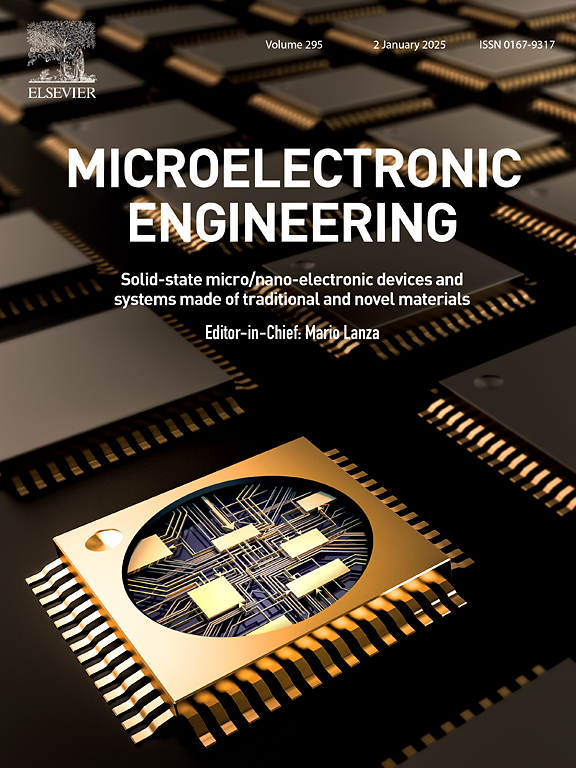Application of atomic force microscopy technology in doping characterization of semiconductor materials and devices
IF 3.1
4区 工程技术
Q2 ENGINEERING, ELECTRICAL & ELECTRONIC
引用次数: 0
Abstract
The precise characterization of the doping profile is crucial for optimizing the performance and structural integrity of semiconductor devices. As the size of semiconductor devices continues to diminish, the need of precise characterization of doping profiles has become increasingly urgent. Atomic Force Microscopy (AFM) has become a promising technique for doping profile characterization within the semiconductor field, owing to its high spatial resolution, multidimensional feature analysis, and flexibility in various working environments. Based on AFM technology, various techniques have been developed for doping characterization, such as scanning capacitance microscope (SCM), scanning spreading resistance microscope (SSRM) and scanning microwave impedance microscope (sMIM). In this work, we systematically review the application of these three techniques for doping characterization and summarize their strengths and limitations. Furthermore, we also evaluate their capability in characterizing the doping profiles of miniature devices with three-dimensional (3D) architectures. This work offers feasible approaches for advanced semiconductor device manufacturing.
© 2012 Published by Elsevier Ltd. Selection and/or peer-review under responsibility of Global Science and Technology Forum Pte Ltd.

原子力显微镜技术在半导体材料和器件掺杂表征中的应用
精确表征掺杂谱对于优化半导体器件的性能和结构完整性至关重要。随着半导体器件尺寸的不断缩小,对掺杂谱的精确表征的需求变得越来越迫切。原子力显微镜(AFM)由于其高空间分辨率、多维特征分析和在各种工作环境下的灵活性,已成为半导体领域中很有前途的掺杂谱表征技术。在原子力显微镜技术的基础上,发展了扫描电容显微镜(SCM)、扫描扩散电阻显微镜(SSRM)和扫描微波阻抗显微镜(sMIM)等多种表征掺杂的技术。在这项工作中,我们系统地回顾了这三种技术在掺杂表征中的应用,并总结了它们的优势和局限性。此外,我们还评估了它们表征具有三维(3D)架构的微型器件掺杂谱的能力。这项工作为先进的半导体器件制造提供了可行的方法。©2012 Elsevier Ltd.出版由环球科技论坛私人有限公司负责甄选及/或同行评审。
本文章由计算机程序翻译,如有差异,请以英文原文为准。
求助全文
约1分钟内获得全文
求助全文
来源期刊

Microelectronic Engineering
工程技术-工程:电子与电气
CiteScore
5.30
自引率
4.30%
发文量
131
审稿时长
29 days
期刊介绍:
Microelectronic Engineering is the premier nanoprocessing, and nanotechnology journal focusing on fabrication of electronic, photonic, bioelectronic, electromechanic and fluidic devices and systems, and their applications in the broad areas of electronics, photonics, energy, life sciences, and environment. It covers also the expanding interdisciplinary field of "more than Moore" and "beyond Moore" integrated nanoelectronics / photonics and micro-/nano-/bio-systems. Through its unique mixture of peer-reviewed articles, reviews, accelerated publications, short and Technical notes, and the latest research news on key developments, Microelectronic Engineering provides comprehensive coverage of this exciting, interdisciplinary and dynamic new field for researchers in academia and professionals in industry.
 求助内容:
求助内容: 应助结果提醒方式:
应助结果提醒方式:


